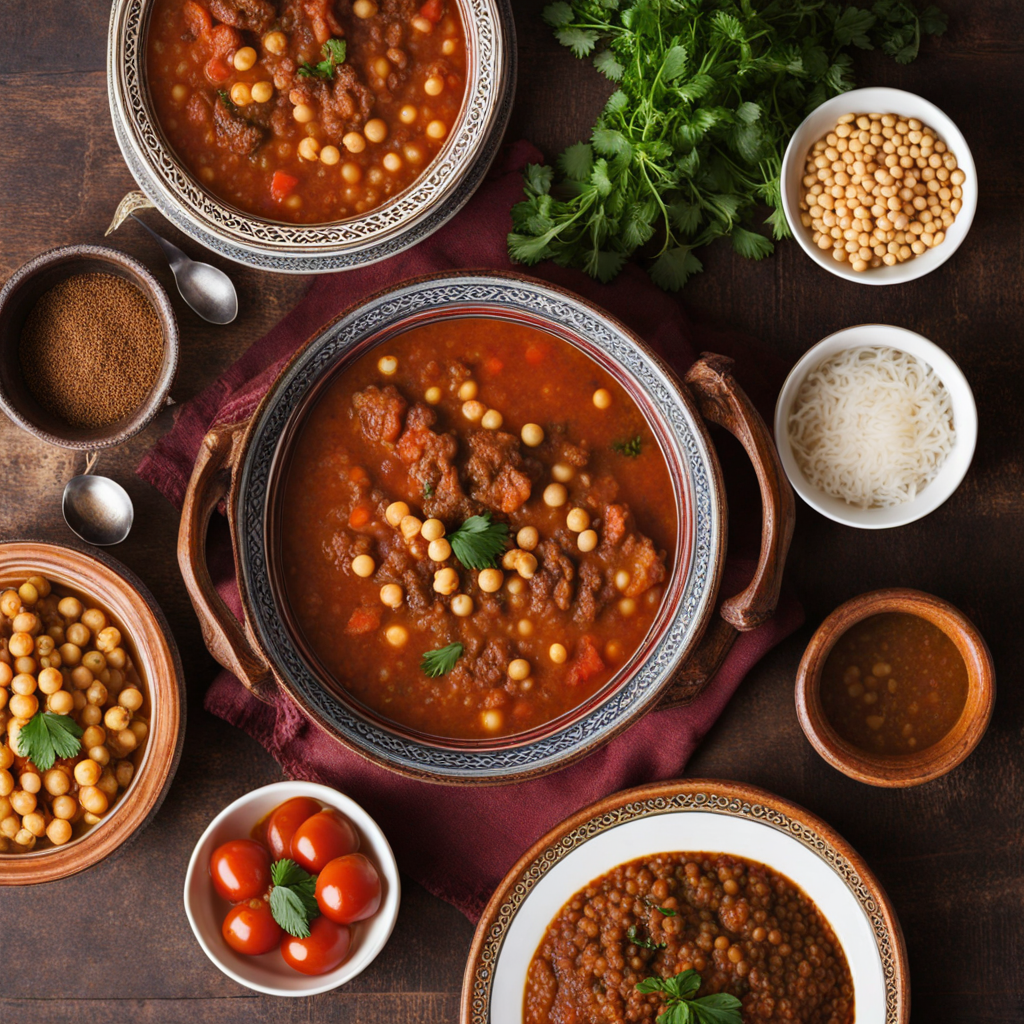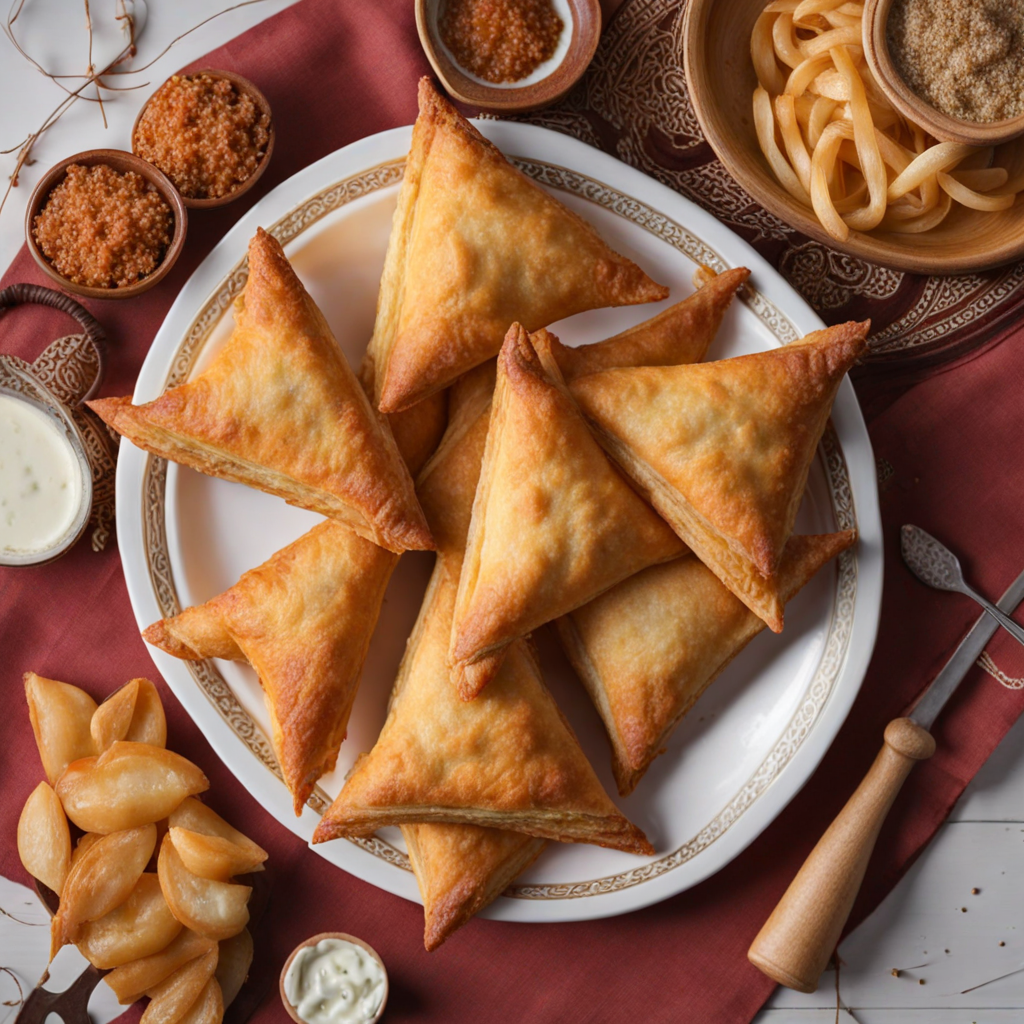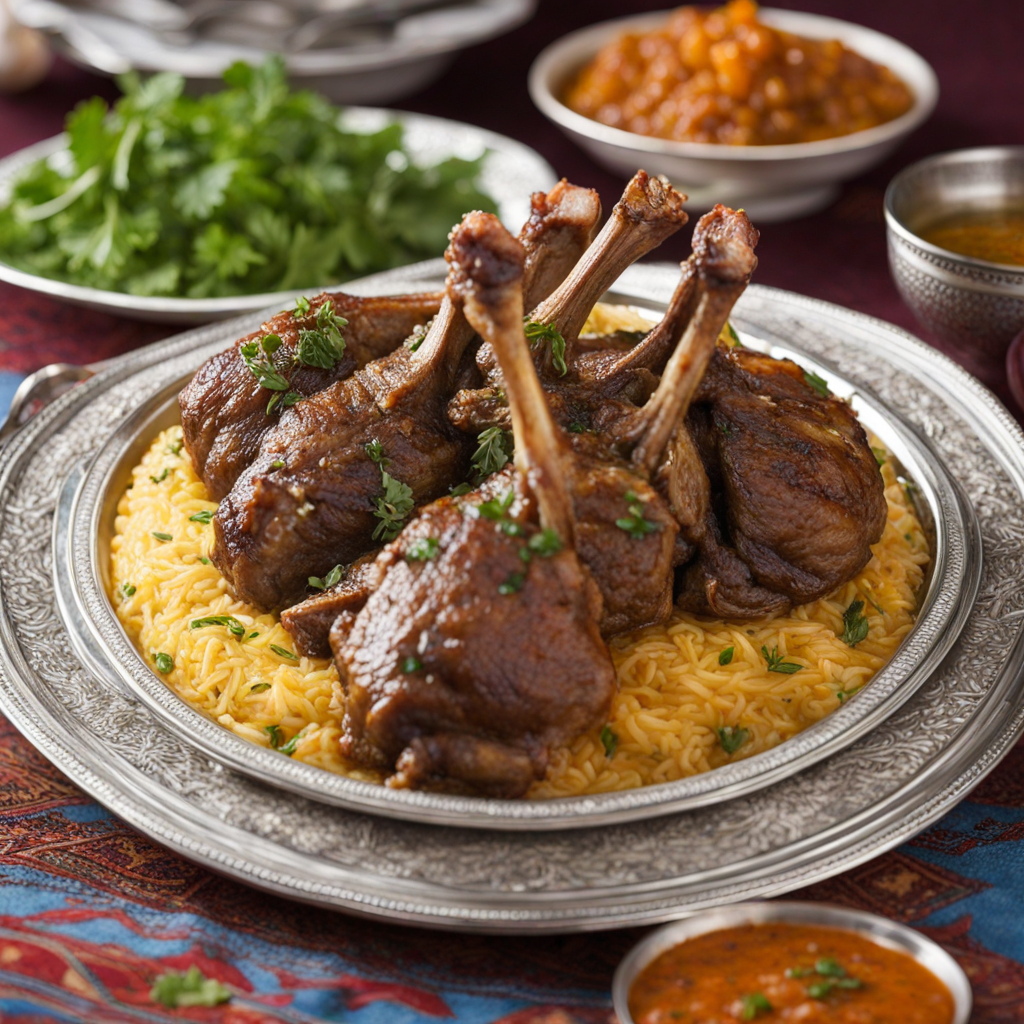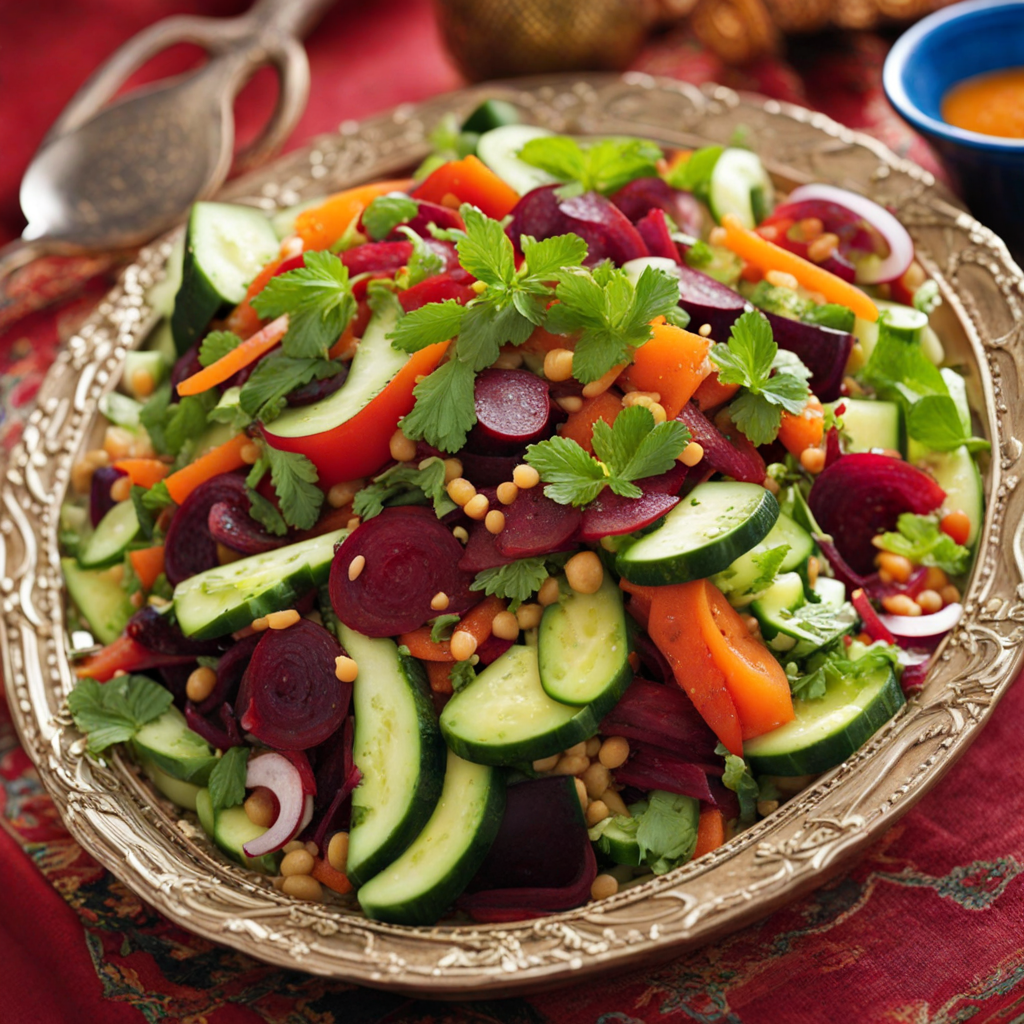Walnut Cookies
Walnut cookies, known as "Ghriba Joz" in Morocco, are a delightful treat that beautifully marries the earthy richness of walnuts with the warm, aromatic spices characteristic of North African baking. These cookies are typically made from a simple mixture of finely ground walnuts, sugar, and egg whites, resulting in a texture that's both chewy and slightly crisp on the outside. The use of powdered sugar gives them a distinct sweetness that balances perfectly with the nutty flavor, making each bite a harmonious blend of taste and texture. What sets Moroccan walnut cookies apart is the addition of fragrant spices such as cinnamon and sometimes a hint of orange blossom water, which adds a floral note that elevates the overall flavor profile. Often dusted with more powdered sugar after baking, these cookies present a snowy white appearance that is visually enticing. They are usually shaped into small rounds or mounds, making them perfect for sharing during gatherings or enjoying with a cup of mint tea, which is a staple in Moroccan hospitality. These cookies not only highlight the rich agricultural heritage of Morocco, where walnuts are commonly grown, but they also reflect the country's culinary tradition of using simple, quality ingredients to create comforting sweets. With every bite of walnut cookie, you can experience the essence of Moroccan culture—warm, inviting, and filled with rich flavors that tell a story of tradition and love for food. Ideal for those seeking a new taste experience, they offer a unique way to explore the delightful world of Moroccan desserts.
How It Became This Dish
The History of 'كوكيز بالجوز' (Walnut Cookies) in Morocco #### Origins: A Fusion of Influences The story of 'كوكيز بالجوز' (walnut cookies) in Morocco is a delightful tapestry woven from the threads of cultural exchange, local ingredients, and the rich history of the region. While the precise origins of walnut cookies are difficult to pinpoint, it is widely acknowledged that the cookie's evolution reflects the broader culinary traditions of North Africa, influenced by Berber, Arab, and Mediterranean cuisines. Historically, walnuts have held a prominent place in Moroccan agriculture. Native to the region, the walnut tree is often associated with fertility and prosperity. The nut itself has been cultivated for thousands of years and is a staple in traditional Moroccan cooking, utilized in both savory and sweet dishes. The combination of walnuts with sweeteners like honey or sugar can be traced back to ancient times, when sweet treats were often reserved for special occasions, religious celebrations, and gatherings. #### Cultural Significance: Beyond Just a Cookie In Moroccan culture, food is not merely sustenance but a means of expressing hospitality, love, and community. Cookies, including walnut cookies, play an essential role in this cultural paradigm. Traditionally, they are served during celebrations such as weddings, Eid al-Fitr, and family gatherings. The act of preparing and sharing these cookies is a ritual that strengthens ties among family members and friends. Moroccan walnut cookies often embody the spirit of generosity that is central to the culture. They are frequently presented on decorative trays, served alongside mint tea, a beverage that symbolizes hospitality. The cookies are also a favorite among children, who eagerly anticipate their presence during festivities. Their unique flavor and texture—crunchy on the outside and soft on the inside—make them a beloved treat across generations. #### Development Over Time: From Traditional Recipes to Modern Variations The evolution of walnut cookies in Morocco can be seen as a reflection of changing tastes and the influence of globalization. Traditional recipes, passed down through generations, often include simple ingredients: ground walnuts, flour, sugar, eggs, and a hint of cinnamon or vanilla for flavor. These basic components are transformed into a delightful treat that celebrates the natural richness of the walnuts. As Morocco opened its doors to the world, particularly in the late 20th and early 21st centuries, culinary influences began to permeate the traditional food landscape. The introduction of new baking techniques and ingredients has led to exciting variations of walnut cookies. For instance, bakers have experimented with the addition of chocolate, dried fruits, and spices, creating an array of flavors that cater to modern palates while respecting the cookie’s roots. Moreover, the rise of health consciousness has prompted many bakers to explore healthier alternatives. Today, variations of walnut cookies made with whole wheat flour, natural sweeteners, or gluten-free ingredients are becoming increasingly popular. This shift reflects a broader trend in Moroccan cuisine, as chefs and home cooks alike seek to balance tradition with innovation. #### The Role of Walnut Cookies in Moroccan Gastronomy Beyond their sweet allure, walnut cookies are an important aspect of Moroccan gastronomy that showcases the country's culinary diversity. They serve as a bridge between the past and the present, embodying the intricate flavors and textures that define Moroccan desserts. The cookies are often found in patisseries, where they are displayed alongside other iconic treats such as 'غريبة' (ghriba) and 'بسكويت' (biscuit), inviting locals and tourists alike to indulge in the sweet offerings of Moroccan cuisine. In recent years, culinary tourism has further elevated the status of walnut cookies. Visitors to Morocco are drawn to the country's vibrant food scene, eager to experience authentic flavors. Cooking classes and food tours often highlight the preparation of traditional cookies, allowing participants to engage with the culture in a hands-on way. This interaction fosters a deeper appreciation for the meticulous craftsmanship that goes into creating these beloved treats. #### The Globalization of Moroccan Cuisine As the world becomes increasingly interconnected, Moroccan cuisine, including walnut cookies, has found its way beyond national borders. The diaspora has played a significant role in sharing these culinary treasures with a global audience. Whether through Moroccan restaurants or online recipe blogs, walnut cookies have captured the interest of food enthusiasts around the world, often inspiring them to recreate these delights in their own kitchens. Moreover, the rise of social media has allowed home bakers and professional chefs alike to showcase their walnut cookie creations, further enhancing their popularity. Platforms like Instagram and TikTok have become stages for culinary experimentation, where visually appealing presentations and innovative flavor combinations invite engagement from a diverse audience. #### Conclusion: A Cookie of Connection In conclusion, 'كوكيز بالجوز' (walnut cookies) embody more than just a delightful flavor; they represent a rich history, cultural significance, and the evolving landscape of Moroccan gastronomy. Rooted in the agricultural bounty of the region, these cookies connect generations and communities, serving as a reminder of the importance of hospitality and togetherness. As walnut cookies continue to adapt and thrive in a globalized world, they retain their essence, bridging traditional and modern culinary practices. Whether enjoyed at a festive gathering, a family celebration, or in the comfort of one’s home, these cookies stand as a testament to the enduring power of food to connect people, cultures, and histories—one delightful bite at a time.
You may like
Discover local flavors from Morocco







